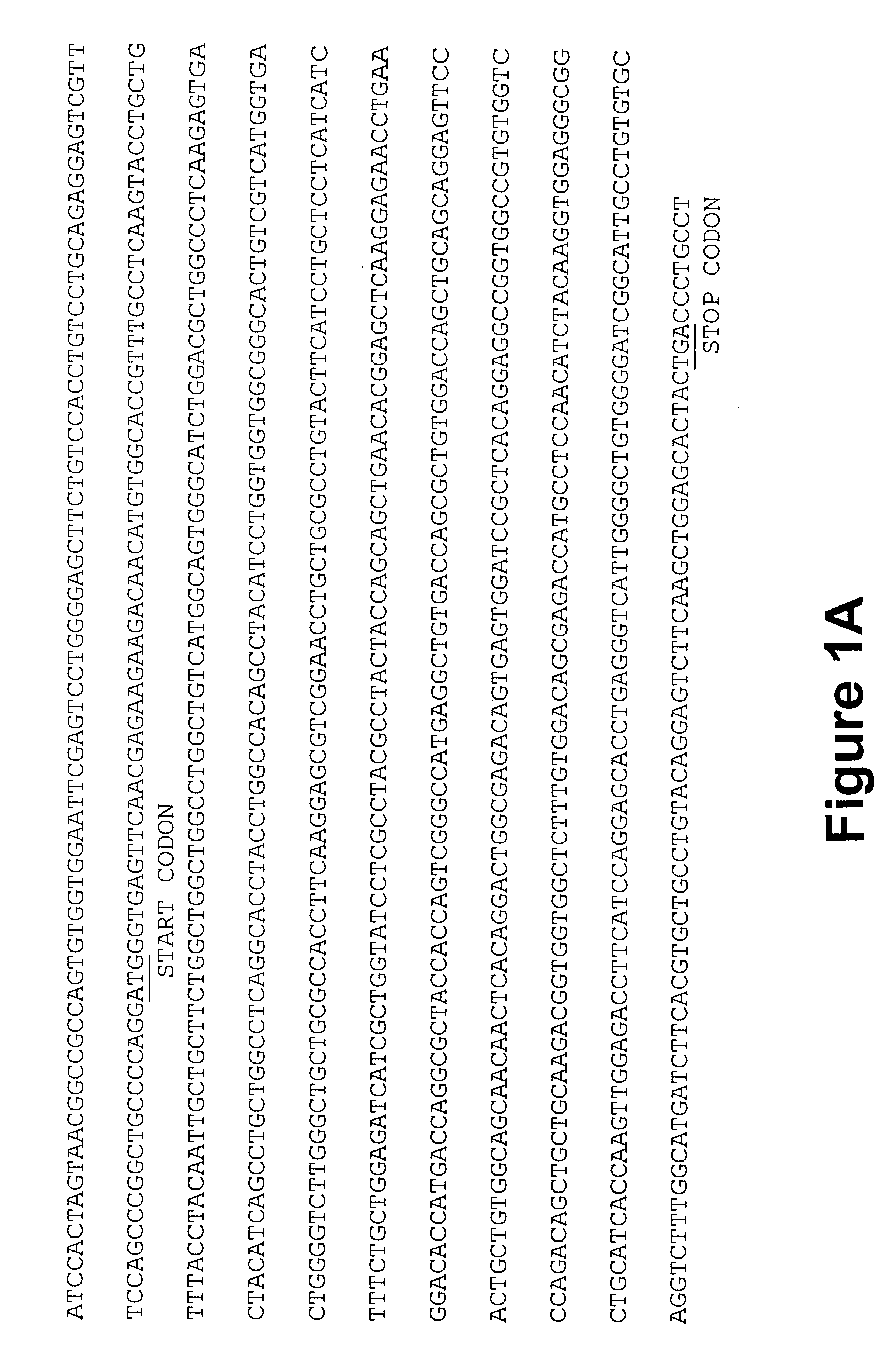Monoclonal antibodies that recognize antigens associated with tumor metastasis
- Summary
- Abstract
- Description
- Claims
- Application Information
AI Technical Summary
Benefits of technology
Problems solved by technology
Method used
Image
Examples
example 2
Isolation of Monoclonal
Antibodies 41-2, 50-6 and 1A5
MAb 41-2, mAb 50-6 and mAb 1A5 were generated by a process called "subtractive immunization" in the following manner (see also Brooks et al., J. Cell. Biol. 122: 1351-1359, 1993).
C57 BL6 female mice, 6-8 weeks old and 16-18 grams, were obtained from Charles River (Montreal, Quebec). On day 1, subconfluent cultures of M.sup.- HEp-3 cell line were washed three times with sterile PBS and harvested by incubation with 3 ml of nonenzymatic cell dissociation solution (Sigma Chem. Co., St. Louis, Mo.) for 1 min. Cells were resuspended in sterile PBS (4.times.10.sup.6 cells / ml) and 2.times.10.sup.6 cells were inoculated i.p. into mice. On days 2 and 3, mice were injected i.p. with 200 mg / kg cyclophosphamide (Sigma Chem. Co., St. Louis, Mo.) in sterile PBS. As a tolerizing (immunosuppressive) agent, Cyclophosphamide suppressed the immune response towards dominant immundeterminants present on the tumor cells. On day 15, sera were collected an...
example 3
Identification of the Target Antigens
The Target Antigen of mAb 41-2
mAb 41-2 was used in a large-scale immunoprecipitation to isolate sufficient amounts of the antigen from Triton X-100 lysates of HEp-3 cells for amino acid sequencing. The immunoprecipitate was resolved by SDS-PAGE under reducing conditions, and following transfer of the resolved proteins to Immobilon-P, a Ponceau-stainable band was observed at 180 kDa (the mobility of the 180 kDa metastasis-associated antigen does not change under reducing conditions). In duplicate immunoblots, the 180 kDa protein was immunostained with mAb 41-2, but not with normal mouse IgG or with secondary antibody alone. The immunopurified metastasis-associated antigen was subjected to Edman degradation and a partial amino acid sequence, FEIALPRESQITVLQ(I)KXGT (SEQ ID NO: 3) was obtained from the amino terminus (residue #15 is either Q or I; residue 17 has not been determined). Comparison of this partial amino acid sequence with known sequences...
example 4
Expression of the Target Antigens
Expression of the Target Antigen of mAb 41-2
Cell lines were examined for expression of the target antigen of mAb 41-2 by whole cell ELISA as described in Example 1. Positive staining by mAb 41-2 was observed with human epidermoid carcinoma HEp-3 cells as well as several human breast carcinoma cell lines. Among the human breast carcinoma cell lines examined (FIG. 4), MDA-MB-231 cells showed the highest immunoreactivity; immunostaining of MDA-MB-468 cells was about 32% that of the MDA-MB-231 cells; and there was little reactivity with MDA-MB-361 cells (about 6% of that seen with MDA-MB-231). The metastatic potential of these three breast carcinoma cells lines has been quantitated and ranked by Zhang et al. (Invasion and Metastasis 11: 204-215, 1991) as follows: MDA-MB-231>MDA-MB-468>MDA-MB-361, from highest to lowest. Thus the immunoreactivity of these cells with mAb 41-2 correlated with their relative metastatic potential.
The expression of the target ...
PUM
| Property | Measurement | Unit |
|---|---|---|
| Fraction | aaaaa | aaaaa |
| Fraction | aaaaa | aaaaa |
| Fraction | aaaaa | aaaaa |
Abstract
Description
Claims
Application Information
 Login to View More
Login to View More - R&D
- Intellectual Property
- Life Sciences
- Materials
- Tech Scout
- Unparalleled Data Quality
- Higher Quality Content
- 60% Fewer Hallucinations
Browse by: Latest US Patents, China's latest patents, Technical Efficacy Thesaurus, Application Domain, Technology Topic, Popular Technical Reports.
© 2025 PatSnap. All rights reserved.Legal|Privacy policy|Modern Slavery Act Transparency Statement|Sitemap|About US| Contact US: help@patsnap.com


